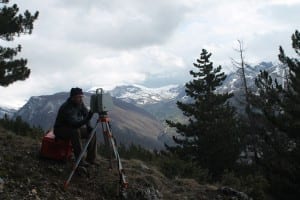New paper on segmented normal fault systems
By Joanna P Faure Walker, on 19 June 2019
Francesco Iezzi (PhD student, Birkbeck) together with Prof Gerald Roberts (Birkbeck), Dr Joanna Faure Walker (IRDR) and Ioannis Papanikolaou (Agricultural University of Athens) have published a detailed study of the long-term displacements across the fault responsible for the 2009 L’Aquila Earthquake, Italy, and the surrounding faults. This reveals that the different faults are behaving together so that the displacement across the system of faults looks similar to if it were one larger fault on ten thousand and million year timescales. This finding can help provide clues regarding the relative local seismic hazard between the different fault segments. The study also provides evidence that the vertical displacement (throw) across a fault increases across fault bends, a result that has been demonstrated in previous papers by the research group (e.g. Faure Walker et al., 2009; Wilkinson et al., 2015, Iezzi et al., 2018). The Iezzi et al. (2019) paper discusses the synchronised and geometrically controlled activity rates on the studied faults in terms of the propensity for floating earthquakes, multi-fault earthquakes, and seismic hazard.

Photograph of damage following the 2009 L’Aquila earthquake, taken by Joanna Faure Walker while accompanying the EEFIT mission.
 Close
Close



